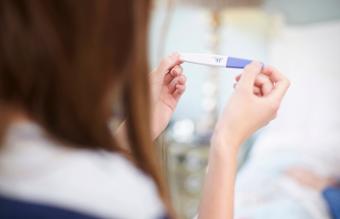
If you are trying to get pregnant, or trying to avoid getting pregnant, you may want to consider creating an ovulation chart.
Keeping an Ovulation Chart
Ovulation is the release of an egg from a woman's ovary. You are most likely to get pregnant starting about three days before ovulation and for about a day after.
Without an ultrasound machine, it's very difficult to tell exactly when ovulation occurs. But, keeping an ovulation chart can give you an idea of which days you are most likely to conceive.
Making an ovulation chart can be as simple as keeping track of your periods, or as complex as recording information about your temperature, results of hormone tests, and the appearance of your cervical mucus. You can also add a column to keep track of when you have sexual intercourse.
How to Make an Ovulation Chart
There are many versions of ovulation charts available for free on the internet. Or, you can make a chart yourself. If you're just keeping track of your periods, you can use a regular monthly calendar.
If you're measuring other changes in your body, try using a piece of graph paper. Make a vertical column for each day of your menstrual cycle. Day One is your first day of bleeding. The cycle ends on the last day before your next period starts. Leave about 20 horizontal lines to chart your temperature. Start with 96 degrees Fahrenheit and go up 0.1 degrees on each line, ending at 99.8. At the bottom of the page, leave room to chart each day's changes in cervical mucus and hormone levels.
Keeping Track of Your Periods
You can expect to ovulate once a month, around the middle of your menstrual cycle. You can make an Ovulation Calendar by keeping track of your periods for several months and then using a simple calculation to determine which days you're likely to be fertile. Mark these days on your ovulation chart.
Click here for information on how to make an Ovulation Calendar.
Changes in Your Cervical Mucus
In between periods, you may notice changes in your vaginal discharge. Mucus is released from your cervix (the entrance to your uterus) and drains out through your vagina.
Just after your period, there may be little or no discharge. Next, it will become wetter and creamier, with a yellow or white color. A few days before ovulation, the mucus becomes clear, slippery, and stretchy, almost like egg whites. This is when you are most likely to conceive. You can find more information about cervical mucus changes here.
Keep track of cervical mucus changes on your chart.
Changes in Hormone Levels
A surge in Luteinizing Hormone (LH) tells your ovaries to release an egg. You can buy an Ovulation Predictor kit at the drugstore to find out when this surge happens. It's a simple urine test that you use it around the middle of your cycle. You can expect to ovulate within a day or two after the LH rises.
On your chart, keep track of the first day in each cycle that your LH test is positive.
Changes in Basal Body Temperature
Basal body temperature is your temperature immediately after you wake up in the morning, before you get out of bed. There is a small rise in your basal body temperature (about 0.4 to 0.8 degrees Fahrenheit) after you ovulate. You can buy a kit at the drugstore with a special thermometer to help you see the change.
Check your temperature every morning and record the result on your ovulation chart.
How to Use Your Chart
Look to see if all your signs of ovulation happen around the same time. Ideally, you'll see that the fertile days on your ovulation calendar match the days when your cervical mucus is slippery and clear. The rise in your basal body temperature should come a day or two after your LH surge. If everything matches, you can be pretty sure you've pinpointed your fertile days for that cycle.
Now, you can use the chart to predict what will happen on your next menstrual cycle. If your cycles are regular, ovulation should happen around the same time next month. Making a chart for each monthly cycle will help you get better at knowing your fertile days.
Time your efforts at conception to match the days before and after you expect to ovulate. Remember to add a few extra days on either side, because you can't be sure exactly when ovulation will happen.
Predicting ovulation is not an exact science. Even with all the methods available, you may never figure out exactly when you ovulate. But, you can use an ovulation chart to get a good idea of when you're likely to conceive.
.







